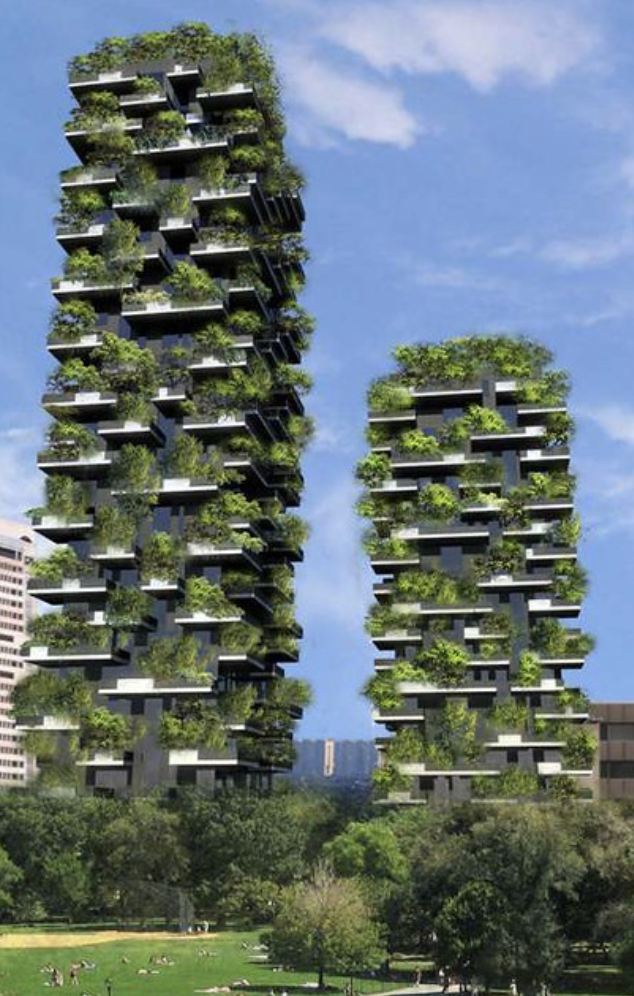“We shape our buildings, thereafter they shape us” ~ Churchill
Why Invest for Sustainability in Real Estate?
Firstly, buildings are a big part of the sustainability challenge, and thus a huge opportunity. “The construction and operations of buildings account for 40 percent of global energy use, 30 percent of energy-related GHG emissions, approximately 12 percent of water use, nearly 40 percent of waste, and employs 10 percent of the workforce.” [1] We spend 90 percent of our time indoors. If we want a more sustainable society and economy, we need to tackle buildings.
The World Green Building Council counts buildings as fundamental to 9 of the 17 Sustainable Development Goals. Secondly, buildings are a fantastic Triple Bottom Line opportunity.[2] There are plenty of projects where better outcomes for people, planet, and profits are simultaneously achievable. Property owners can profit from energy efficiency retrofits and building improvements. Reducing energy use reduces utility bills. Better, healthier buildings typically command higher rents and are worth more.[3]
Third, investor engagement can make a big impact in the real estate sector. There are some Real Estate Investment Trusts (REITs) leading the way, demonstrating profitability through sustainability, but there are also many who haven’t been taking advantage of the opportunities yet. Investors who demand better performance, highlight best practices, and educate executives can push companies to do more and create impact.
The Triple Bottom Line Opportunity in Sustainable Buildings
Because buildings consume so many resources, and we spend so much time in them, they represent an outsized opportunity.
“The environmental impact of the built environment can be minimized with energy-efficient buildings, as well as with environmentally sound siting decisions, materials selection, water use, and waste management. In addition, energy-efficient buildings contribute to better indoor and outdoor air quality through reduced pollution and improved ventilation, leading to health and economic benefits.” [4] (World Resources Institute in 2017)
Making sustainable upgrades to properties old or new can be beneficial in terms of cash flow. Efficiency improvements can reduce operational costs through lower utility bills and maintenance costs; lower exposure to energy price risk; or lower insurance and debt cost. A property with a green building certification can result in higher occupancy rates or increased tenant satisfaction, which translates into longer leases, higher demand or a rent premium. Studies also show green buildings to enjoy a price premium, a lower default risk, lower volatility and slower rate of depreciation.[5]
REITs that focus on sustainability can maximize these benefits and attract ESG investors.
Get the strategy for Capturing the Triple Bottom Line Opportunity on Green Money.
~
Article Footnotes:
[1] Originally quoted from UN Environment Programme from Sustainable Buildings and Construction. Similar figures now found at the International Energy Agency (2019). “Energy Efficiency: Buildings.” Retrieved from: https://www.iea.org/topics/energyefficiency/buildings[2] The ‘Triple Bottom Line’ phrase originated in 1994 with John Elkington founder of SustainAbility; most notably in the paper: Elkington, J. (1994) “Towards the Sustainable Corporation: Win-Win-Win Business Strategies for Sustainable Development”, California Management Review, vol. 36, 2: 90-100. John Elkington is an Advisory Board Member of Vert Asset Management.
[3] Coleman, P., Deason, J. and Mathew, P. (2017, October). CRE Literature Survey. Presentation delivered at the Lawrence Berkeley Lab and US Department of Energy Research Workshop, University of North Carolina, Chapel Hill.
[4] World Resources Institute (2017). Accelerating Building Efficiency: Eight Actions for Urban Leaders. Retrieved from: http://publications.wri.org/buildingefficiency
[5] Fuerst, F. and McAllister, P. M. (2008, July 15) “Green Noise or Green Value? Measuring the Effects of Environmental Certification on Office Property Values.” Retrieved from https://ssrn.com/abstract=1140409
[6] Empire State Building (2014). “Sustainability & Energy Efficiency.” [Information Section]. Retrieved from www.esbnyc.com/esb-sustainability
[7] World Resources Institute (2016, May 11) “4 Surprising Ways Energy-Efficient Buildings Benefit Cities.” Retrieved from http://www.wri.org/blog/2016/05/4-surprising-ways-energy-efficient-buildings-benefit-cities
[8] Empire State Realty Trust is 0.30% of the Vert Global Sustainable Real Estate Fund (VGSRX) as of March 31, 2019.
[9] Sekisui House Reit Inc is 0.31% of the Vert Global Sustainable Real Estate Fund (VGSRX) as of March 31, 2019.
[10] These are the various acronyms referred to in figure 3: HEMS – Home Energy Management System, EV – Electric Vehicle, PHV – Plugin Hybrid Vehicle, PV- Photovoltaic.
[11] Boston Properties Inc. is 2.77% of the Vert Global Sustainable Real Estate Fund (VGSRX) as of March 31, 2019.












Read 0 comments and reply